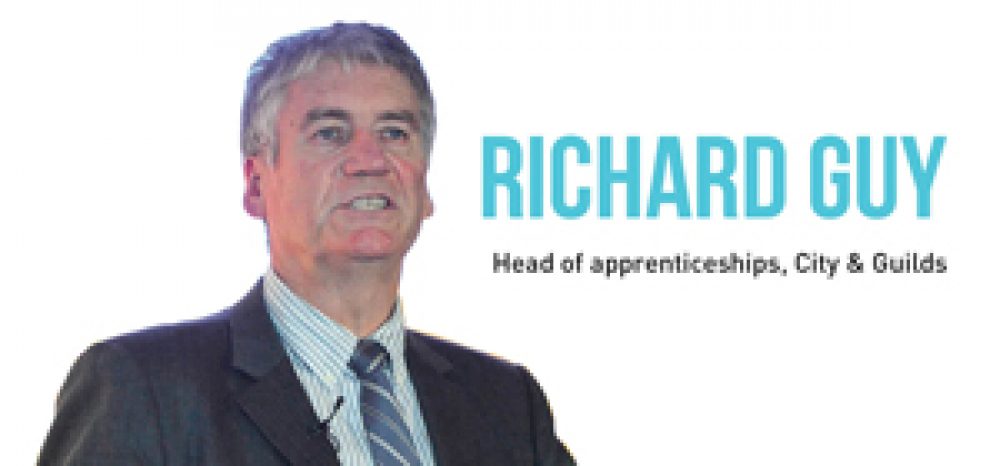The prospect, not to mention the potential cost, of end assessments in Trailblazer apprenticeships has proven a cause for concern for employers and providers. Richard Guy attempts to address these concerns.
One of the biggest changes in the apprenticeship reforms is the introduction of independent end assessment for all apprenticeships. It’s clear from recent news that there is confusion surrounding how this will work, with warnings coming from both the Confederation of British Industry and the Association of Employment and Learning Providers around the additional costs of independent assessment.
What these warnings don’t make clear is that far from being an additional financial burden to employers, end assessment is in fact a new way of assuring quality in the system that replaces the existing models of continuous assessment that are no longer fit for purpose.
Existing models of continuous assessment are no longer fit for purpose
In Making Apprenticeships Work, published jointly by City & Guilds and our Industry Skills Board (ISB) we look at the importance of end assessment in apprenticeships and recommend that the end assessment standard should reflect full productivity, mastery and autonomy in an apprenticeship. This allows for a holistic view of the apprentices’ skill level in a particular area as well as general workplace skills they have developed during the apprenticeship.
The apprenticeship reforms have given each Trailblazer group responsibility for developing an occupation-specific assessment plan which will set out the skills, knowledge and behaviours required together with the assessment methods to be used. These will range from workplace observation through to projects both in and out of the workplace.
It’s important to recognise the role that continuous assessment will still play in an apprenticeship. Before the end assessment takes place the apprentice has to be signed off as ready by his or her employer — it is only through continuous assessment that the employer will be able to gain a realistic view of the apprentice’s readiness. This type of ongoing progress tracking is likely to be carried out by the employer with the support of their provider, rather than by the provider as currently.
A point of confusion has been around the costs of end assessment. It’s neither possible nor helpful to look at end assessment as a percentage of the overall apprenticeship cost. Each assessment plan will be individually costed based on the specific assessment tools and methods needed and these will be fixed regardless of the cost of the overall apprenticeship. The cost estimates by Trailblazer groups which we have knowledge of range from £500 to £1,500 depending on the methods determined by the group. This may well reduce once actual occupations are priced and we have not priced any yet.
The cost of end assessment will represent a small proportion of the total costs of most apprenticeships and whatever the cost, it will always be included in the allocation to a funding band.
An important and common element of all costings is the time taken by the independent assessor in assessment activity. In Making Apprenticeships Work we highlighted the importance of the independent assessor role. The person should have a status similar to that of an Ofsted inspector albeit with a different set of skills including very strong industry knowledge.
Independent end assessment is a big change in the system and employers are understandably nervous about starting apprentices until they have seen what the end assessment looks like. Each apprenticeship standard is published on the gov.uk website as “ready for delivery” once the assessment plan is approved and a funding band is allocated. However this does not mean that the development work on assessment instruments has been completed and this can take some time for Registered Assessment Organisations (RAOs) to carry out. City & Guilds will advise employers on progress, to help them take on apprentices as quickly as possible.
As the reforms continue, it’s vital we learn lessons from the past to create an end assessment for every apprenticeship that measures the quality of the programme and assesses the individual apprentices in a valid and reliable way. This is how the value of the reforms will be realised and will require collaboration between employers, providers and RAOs to ensure we have high quality and cost effective solutions in place.









You write, Richard: “It’s neither possible nor helpful to look at end assessment as a percentage of the overall apprenticeship cost”.
BIS asks for exactly that in its Costing Template.
But exactly how accurate is that end cost calculation? Does it go to the last pound or is it rounded up like everything else? We won’t know how much an end point assessment will actually cost until each trailblazer has reported back after the fact. We have to take into account every fluctuation in each activity that can impact on time and performance. Weather conditions, flaws in metals, animals that don’t co-operate – all of these and more will impact on cost. We must, must be confident that all associated costs are real and not estimated or we’ll soon find out to our cost that sustainability of end point assessment will be impossible to maintain.